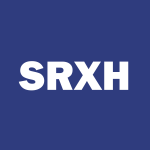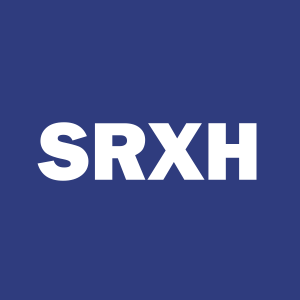Welcome to our dedicated page for SRX Health Solutions SEC filings (Ticker: SRXH), a comprehensive resource for investors and traders seeking official regulatory documents including 10-K annual reports, 10-Q quarterly earnings, 8-K material events, and insider trading forms.
Our SEC filing database is enhanced with expert analysis from Rhea-AI, providing insights into the potential impact of each filing on SRX Health Solutions's stock performance. Each filing includes a concise AI-generated summary, sentiment and impact scores, and end-of-day stock performance data showing the actual market reaction. Navigate easily through different filing types including 10-K annual reports, 10-Q quarterly reports, 8-K current reports, proxy statements (DEF 14A), and Form 4 insider trading disclosures.
Designed for fundamental investors and regulatory compliance professionals, our page simplifies access to critical SEC filings. By combining real-time EDGAR feed updates, Rhea-AI's analytical insights, and historical stock performance data, we provide comprehensive visibility into SRX Health Solutions's regulatory disclosures and financial reporting.
SRx Health Solutions (SRXH) appointed Sammy Dorf to its Board of Directors, effective immediately. Dorf is Executive Chairman of Flora Growth and previously co-founded Verano Holdings, a multi-state cannabis company. The filing highlights his capital markets and operational experience, noting he has raised over $300 million and helped secure 25+ licenses across 14 states. The company also furnished a related press release as an exhibit.
SRx Health Solutions, Inc. filed a Form S-1 to register the resale of up to 101,865,909 shares of common stock by selling stockholders. This is a secondary offering; the company will not receive proceeds from any sales under this prospectus. The registered shares comprise multiple sources, including shares issuable upon conversion of Series A Preferred Stock and upon exercise of warrants issued in the July and October 2025 PIPE financings, exchangeable shares from SRx Canada, a prior private placement, service provider issuances, and shares issued in a share exchange.
The filing notes that these shares represent a considerable percentage of the public float and that resales could pressure the market price. Shares of common stock outstanding were 24,992,539 as of November 5, 2025; this is a baseline figure, not the amount being offered. SRXH is listed on NYSE American. The company states it will not receive any proceeds from selling stockholders’ resales and highlights risks related to future capital needs, potential dilution from future financings, and other operational and market factors.
SRx Health Solutions, Inc. filed an S-1 registering up to 82,000,000 shares of common stock for resale by Keystone Capital Partners. These shares are outstanding or issuable under a Common Share Purchase Agreement, and the Selling Stockholder will receive all proceeds from any resales. We are not selling securities in this prospectus and will not receive proceeds from the Selling Stockholder’s sales.
The Company may, at its discretion, sell shares to Keystone under an equity line, with potential aggregate gross proceeds of up to $1.0 billion subject to agreement terms and market conditions. The 82,000,000 shares offered for resale represent approximately 40.64% of total fully diluted outstanding shares as of this prospectus. Shares outstanding were 24,992,539 as of October 31, 2025. Our common stock trades on NYSE American under “SRXH”; the October 31, 2025 closing price was $0.3000 per share.
The filing notes NYSE American’s 19.99% Exchange Cap and a 4.99% beneficial ownership limit applicable to the Selling Stockholder. The Company will pay certain registration expenses; sale methods are as described under Plan of Distribution.
SRx Health Solutions entered a private placement for up to
The warrants expire three years from first exercisability and have an exercise price of
The company also amended its common stock purchase agreement, increasing the total commitment from
SRx Health Solutions, Inc. reported a NYSE American noncompliance notice tied to Section 1003(a)(ii), which requires stockholders’ equity of at least
The company must submit a compliance plan by
SRx Health Solutions, Inc. disclosed that its board will seek shareholder approval for an Additional Reverse Split of its common stock to occur after the previously approved reverse split from
SRx Health Solutions, Inc. provided a preliminary information statement describing current beneficial ownership and the potential effects of an Additional Reverse Split on trading liquidity and continued listing on the NYSE American. The filing lists individual holdings for named executives and directors: Lionel F. Conacher 1,096,883 shares (
David Allan White, a newly appointed director of SRx Health Solutions, Inc. (SRXH), reported multiple stock acquisitions tied to his appointment. The Form 4 shows acquisitions on
The condensed consolidated 10-Q shows SRx Health Solutions incurred a net loss of $15.1 million for the three months and $29.7 million for the nine months ended June 30, 2025, compared with losses of $3.1 million and $11.1 million in the prior-year periods. The company reports a working capital deficiency of $49.6 million and $67.7 million (two comparative periods), material impairments to customer-list intangibles, and goodwill-related adjustments tied to prior acquisitions.
Significant corporate actions include a reverse acquisition that made SRx Canada the accounting acquirer, a private placement raising $8.8 million (1,280,000 shares and 2,756,697 pre-funded warrants), issuance of shares for advisory and settlement purposes, repurchase activity (76,800 shares repurchased in the period) and the subsequent filing for creditor protection under CCAA by the Canadian operating subsidiary, which led to a write-off of a prepaid amount. The company also has convertible and secured notes outstanding and a senior secured convertible note financing referenced as a subsequent event.


